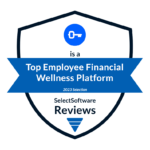The majority of Americans have money on their mind, as 83% of adults say inflation is a source of stress, and 69% are concerned with the overall economy. Not only are about 43 million borrowers impacted by the return of student loan payments, many Americans are also feeling the loss of government-supported pandemic-era benefits, and struggling to afford basic needs like healthcare, food, housing, childcare, and transportation.
As the provider of the paycheck, employers play a key role in helping employees adapt to these changes.
Here’s a closer look at some of the specific financial challenges your employees may be facing, and how you can help.
1. Increased healthcare costs, less access
The KFF estimates that the share of people who lacked health insurance coverage in 2021 returned to levels not seen since the historic low in 2016, due to extended Medicaid coverage that was offered as part of the public health emergency.
But on March 31, 2023, continuous enrollment ended. As of September 2023, more than 7.5 million Medicaid enrollees have lost coverage.
For employers, this may lead to more people joining employer-sponsored healthcare plans, and more employees facing higher costs for household members who are ineligible for coverage.
Extensions that once applied to events like special enrollment periods and COBRA also changed in June 2023, increasing the possibility that some employees lack appropriate healthcare coverage for their families.
Helping employees gain better footing with financial wellness benefits may mean employers see healthcare utilization (and costs) increase–but only temporarily. As those putting off care get the help they need, those increases will subside. They can also mitigate longer-term care costs, and the risks of worsening conditions.
2. Student loan payments are back
Federal student loan payments, collections, and garnishments were paused in March 2020. Now that payments resumed on October 1, 2023, more than 40 million Americans must determine how they’ll afford the return of this monthly expense. According to one survey, nearly 2 in 5 federal student loan borrowers will need to significantly change their budget to afford their student loan payments.
While the Department of Education offers programs that can help borrowers afford their loans, including income-driven repayment plans, a “Fresh Start” initiative that helps those with loans in default return to good standing, and forgiveness programs based on a borrower’s profession, Brookings points out that many who could qualify for these programs do not use them. Why? They simply don’t know about them or don’t know how to enroll.
Employers can help by providing employees with unbiased financial health support that makes it easy for employees to understand all of their student loan options and pursue the best payment program for their unique needs, based on their holistic financial picture, priorities, and goals.
3. Cash from the government has dried up
More than 42 million Americans are enrolled in SNAP benefits, and research shows that more than half of people who receive SNAP benefits are employed. Emergency allotments that provided SNAP recipients with extra support as part of government relief measures ended in March 2023. As a result, a family of four may now receive $328 less in monthly SNAP benefits.
To add to the financial pressure, the cost of food keeps rising. Not only did grocery prices rise 10.2% from February 2022 to February 2023, they’re forecasted to increase another 7.8% by the end of 2023.
Many Americans also found their tax refund shrunk this year, as stimulus checks and pandemic-era increases became a thing of the past. Plus, stricter reporting requirements for 1099s may have meant that employees with side hustles and other sources of taxable income faced potentially higher taxes.
Employers can help employees navigate these strains with holistic financial wellness benefits that connect them with local and government resources that ensure affordable access to necessities including food, utilities, and safe housing.
Here’s an example of how Brightside does that:
Jocelyn is a single mom who fell behind on critical bills after missing work due to chronic illness.
Her Brightside Financial Assistant connected her with a program that helps families catch up on late utility bills, found a benefit to reduce her future utility costs, and a program that will lower her internet bill by $30 a month.
Support employee financial challenges with Financial Care
Brightside created Financial Care, a new category in employee benefits, to help working families minimize acute damage to their short-term financial health and set them up for long-term financial security.
Now, more than ever, employees need Financial Care to navigate their financial challenges. As employers struggle with recruitment and retention, differentiated benefits with proven employee success stories can also help employers win the war for talent.
Click here to learn more about why Brightside is the only model designed to support the financial health of the 70% of Americans living paycheck to paycheck, by offering unbiased financial solutions and personalized financial navigation and support.
This article was updated on October 24, 2023 for factual accuracy.





